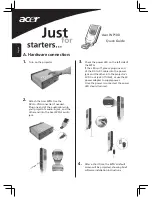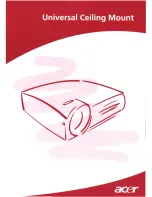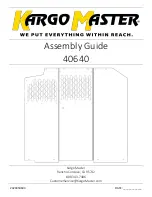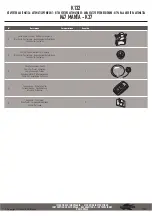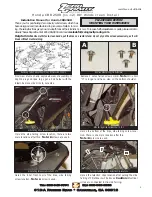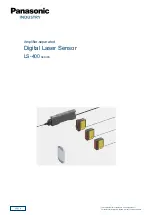
ReynoldsCycling.com
10
7. BRAKES
WARNING: Failure to use recommended brake pads will void the warranty on your carbon
wheels, and may also cause wheel component failure, resulting in an accident, injury or death.
• DO NOT USE CORK BRAKE PADS
on Reynolds carbon wheels. This will void your warranty.
Use only Reynolds supplied or recommended brake pads on your carbon wheels for best
performance. Reynolds brake pads are less subject to overheating and dissipate heat better that
stock brake pads.
• CAUTION:
Using the same set of brake pads for both carbon and alloy wheels will increase the
opportunity for excess wear, rim damage and heat deformation on the carbon wheel.
Please consult the instruction sheet supplied by manufacturer.
8. PERIODIC WHEEL AND BRAKE PAD MAINTENANCE
After using the wheelset for the first time, check each wheel for trueness and circularity.
MAINTENANCE AND WHEEL CLEANING
Your Reynolds carbon wheels possess some of the best components and materials available in the cycling
industry. Your rims have a specially engineered composite layer at the brake track area to help dissipate
heat, increase durability and extent longevity. For best results, keep brake pads and rims clean from debris
and glazing on a regular basis.
• Debris can come from many sources. It is commonly generated any time you apply brake pads to
the rim, whether you are riding aluminum or carbon wheels. Both surfaces naturally wear on each
other and remove minute amounts of surface material at the point of contact. Debris is also picked
up from the road and environment as you ride. It is not uncommon to see small stones, metal or
other road debris embedded in bicycle brake pads. Wet and adverse climate riding conditions also
increase debris build-up on pads, contaminant build-up on the rim surface and increased abrasion
between pads and rims.
• Brake pad glazing most often occurs from overheating the brake pad and rim surfaces. Carbon and
aluminum rims react differently to heat. Carbon rims tend to build up heat more rapidly under hard
and prolonged braking conditions. Brake pads may glaze-over or surface-harden easily, especially
if you are new to riding carbon wheels and in hilly or mountainous areas. Riding and braking style
is also a contributor to pad glazing. For most riders, a simple change to their frequency and force
of braking may reduce brake pad glazing and heat build-up. The biggest difference in riding wheels
with aluminum or carbon braking surfaces is the impact of prolonged braking on rim longevity. Try
not to “drag” or “grab a handful of brakes” when slowing your bike with carbon wheels—especially
on long descents.
• Use your brakes with lighter modulation. Try to “feather” the brakes rather than to “ride or drag” the
brakes continuously against the rim. More frequent, short, quick, light applications of your brakes will
offer the best results while still providing adequate stopping power; much like an ABS system does
for your car. Prolonged application of the rear brake combined with shorter, faster, lighter application
of the front brake may also provide less glazing, increase brake pad life and benefit safety in bike
handling.
FOR BEST RESULTS, PRACTICE THE FOLLOWING SIMPLE CLEANING TIPS
• Wheel cleaning may require you to remove the tires to easily access the entire braking surface.
Routine rim and brake pad cleaning should be performed at least every 3–4 months. Contact your
mechanic, or an authorized dealer/distributor for recommended maintenance schedule.
• Suspend your bicycle in a rack and drop the wheelset out of the frame.
• Inspect the brake pad surfaces, front and rear, for embedded debris. Remove any embedded small
particles in the pads with a fine point tool.
• Abrade/scuff/sand the brake pads vertically—opposite the direction of rotation from the wheel. Do
Summary of Contents for 46 AERO
Page 1: ......















